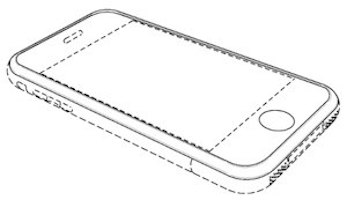While design patents have been around as long as utility patents, they have long been neglected as a source of potential value. But that is changing.
In a shifting tide that began five years ago, courts have begun favoring the plaintiff in design patent lawsuits by simplifying the standard for proving infringement on the ornamental features of a product.
The impact of the court’s shift in the infringement analysis was evident in December 2013, when a jury in San Jose, California, awarded $290 million to Apple Inc. The jurors heavily tilted toward the iPhone maker in its claims for damages against Samsung Electronics Co. Ltd., which had earlier been found to infringe on iPhone design features, such as using fingers to pinch and zoom on the screen.
Apple’s victory was hard won. The latest award was connected to a lawsuit that began two years earlier and had resulted in damages of $1 billion. That was reduced to nearly $640 million, with the remaining amount being litigated a second time.
Both sides spent millions of dollars in legal fees. Your client may not have those resources, but it may have an equally valid claim. That can be determined through an analysis that takes into account the merits of the patent, the value of the infringement claim, and the availability of financing for hard-fought, prolonged litigation.
The following criteria can help in making that decision. This is a guideline, not a formula. As such, this analysis should not be construed as being applicable to any of our firm’s pending cases
First, look at the merits of the infringement claim. They may be stronger than you think, and you can thank a 2008 ruling for that. That year, the United States Court of Appeals for the Federal Circuit unanimously ruled en banc in Egyptian Goddess, Inc. v. Swisa, Inc. that a design patent is infringed if an ordinary observer would think that the accused design is substantially the same as the patented design when the two designs are compared in the context of the prior art.
The court removed the “point of novelty” and “non-trivial advance” standards that previously seemed to constitute a second set of criteria to prove design patent infringement. That ruling has made life much easier for plaintiff attorneys and it helped Apple in its lawsuit against Samsung.
The court’s standard also raised the importance of prior art. A comprehensive prior art search makes sense, especially because your opponent is certain to spend substantial time, effort and money on prior art as part of its defense.
It may be beneficial to consult with an independent expert who can support the design infringement claims at an early stage in the liability analysis. Experts have always played a significant role in design patent trials. The jury foreman in the latest Apple-Samsung case told a newspaper that Apple’s expert on damages strongly influenced the jury’s decision.
The next step in is to look at the value of the design to both your client and the infringer. Evaluate the extent to which the infringing design is used to attract buyers. The infringer may be claiming that its product has a fresh, improved look. This can be learned from illustrations, photographs and texts from the infringer’s advertisements. In this digital age, websites, banner ads and other promotional and sales material can be of value.
Conversely, how do customers perceive the value of the design? The Web can be an effective tool for finding buyer reviews and comments. How often do people comment on the similarities between the client’s product and the infringing design? Do people compare the products in photographs? The more often the two are seen as being the same, the stronger the case.
At this point, an attorney should be able to reach a conclusion on whether the case has merit. The client has a defensible patent, the infringer made use of the design in its advertising, and it can be shown that an ordinary observer would be deceived.
Now it is time to consider the infringer. Apple needed to look no further than the supplier of many of the components of its iPhone. Apple was the pioneer in smartphones, but by the third quarter of last year, Samsung had 31 percent of the market and Apple 13 percent.
In its third quarter of 2013, Samsung reported record revenue of $55.59 billion and an operating profit of $9.56 billion. Clearly, it had the means to pay the damages Apple was seeking.
The infringer in your case may also be a large company, but how much does it reasonably owe? Samsung had asked the jury to award $52 million; Apple wanted all of the $380 million that had been cut from its original award.
The owner of the infringed patent is due a royalty. That amount and the claim for lost profits need to be determined before going forward.
In calculating those figures, the plaintiff’s attorney often overlooks an analytic tool known as role-reversal. Presume you were instead hired by the infringer. What defenses to validity, infringement (liability) and damages could you raise? What facts and law could you rely on to reduce or eliminate a lost profits award? What facts and law could cite to reduce or eliminate a reasonable royalty award? The answers will help you strengthen arguments on behalf of your client.
Last, we turn to a critical financial question: Who funds litigation that may require substantial resources and several years to resolve? Apple could afford to try, appeal and re-try its claims around the world. Your client will likely not have the same means. And the infringer may be stronger financially and therefore less willing to settle.
Based on innovations in finance and the potential that claims like those by Apple show, some law firms are open to contingency or alternate fee arrangements. A number of factors go into the decision to offer the client a shared-risk arrangement. That determination should be made separate from the merits of the case.
Before seeking innovative financing, you need more than a collectible infringer to sue. You need a comprehensive analysis of strengths and weaknesses; unfortunately, the infringer may try to outlast you, no matter how strong your case. Whoever funds the litigation will also consider all these factors. Your opportunity to secure innovative financing is enhanced if you have addressed these factors in advance.

![[IPWatchdog Logo]](https://ipwatchdog.com/wp-content/themes/IPWatchdog%20-%202023/assets/images/temp/logo-small@2x.png)


![[Advertisement]](https://ipwatchdog.com/wp-content/uploads/2024/05/Quartz-IP-May-9-2024-sidebar-700x500-1.jpg)
![[Advertisement]](https://ipwatchdog.com/wp-content/uploads/2024/04/Patent-Litigation-Masters-2024-sidebar-700x500-1.jpg)

![[Advertisement]](https://ipwatchdog.com/wp-content/uploads/2021/12/WEBINAR-336-x-280-px.png)
![[Advertisement]](https://ipwatchdog.com/wp-content/uploads/2021/12/2021-Patent-Practice-on-Demand-recorded-Feb-2021-336-x-280.jpg)
![[Advertisement]](https://ipwatchdog.com/wp-content/uploads/2021/12/Ad-4-The-Invent-Patent-System™.png)






Join the Discussion
One comment so far.
Mark Nowotarski
March 1, 2014 06:38 pmGreat article. An additional key thing to consider is that you may not have to go to court to enforce your design patent. If a counterfeiter is selling your product on a major on-line shopping site like amazon, ebay or alibaba, then all you have to do is send the on-line shopping site your design patent to have the counterfeit taken down.